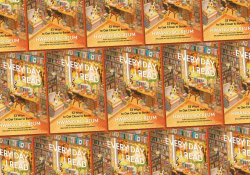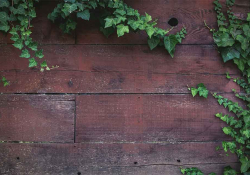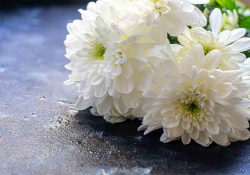Story of a Metal Box

A family’s history, Soviet history, and the role of a father’s stamp collection.
Do you see this little metal box? It was surely unusual for its time—just look at all these stamps of countries whose names, in the Soviet Union, were synonymous with the forbidden “West.” On the top there is a stamp of the Netherlands, and on the sides are stamps of Italy, Denmark, Sweden, West Germany (Deutsche Bundespost), Repubblica di S. Marino, and so forth. I remember seeing it in my earliest childhood. It came into my parents’ possession after the war, when my father, who had spent his youth in pre–World War II Latvia, became a Soviet citizen by chance. In this case, “by chance” is my way of referring to Latvia’s annexation by the Soviet Union, which certainly wasn’t “chance”—it was politics, and politics is always someone’s meticulous, even if delusional, plan.
Politics is always someone’s meticulous, even if delusional, plan.
But in the life of my father, whose parents took him and his little sister to independent Latvia as they were escaping from revolutionary Moscow in cattle cars, it was “chance” that brought him back to Moscow and that made him a Soviet citizen. He and his sister were the only members of their whole family to survive the Holocaust, simply because they were not there at that time: she had been living in London, and my father had escaped from Riga to Russia a couple of days before the Nazis came. After the war my father started corresponding with his sister, at great risk to himself, because in those years a Soviet citizen was not allowed to have relatives abroad, let alone correspond with them. Later, after Stalin’s death, my English aunt and her husband came to the USSR every year, not so much to visit my father as to be in the land they loved. Not having experienced communism on their own skin, they liked the Soviet way of life so much they referred to themselves as “pink,” that is, almost—but not quite—“red,” as was the fashion among British “fellow travelers” of the time.
But to get back to the little metal box with pictures of stamps from those exotic Western countries a Soviet citizen could visit only in his dreams. This box must have come from my English aunt, just as another metal box I remember from my earliest childhood, the one decorated with pictures of equally exotic English sweets. I haven’t seen that other box since our departure from the Soviet Union in June 1972. When I was five, we spent two summer months in Asari, a Baltic resort near Jūrmala, Latvia. My brother and I spent our days at a beach, collecting amber washed onto the shore. We walked barefoot on wet sand and pebbles, and every time we found a small piece of what looked like amber, we put it into that other metal box, the one with pictures of English sweets. By the end of our stay, the English box for exotic sweets was filled with exotic amber. If you held a piece of amber in your hand and looked at it closely, you could see a dark sun playing inside it.
Sometimes I wonder if I’m confusing the summer in Asari with the summer in Svetlogorsk—I was five in Asari and four in Svetlogorsk. Both were on the Baltic coast, and perhaps it was in Svetlogorsk that my brother and I were collecting amber on the shore. My father stayed in Moscow, so it was just our mama taking care of the two of us. I remember that every day, at three, she took us to someone’s house, where there was a long table with many people sitting at both sides of it. We ate dinner (Russian obed is a midday meal) with rhubarb, my father’s favorite dish. Alas, I was such a slow eater in those days that we had to stay there long after everyone was gone and the hosts were clearing the long table while I was still chewing, or pretending to chew, which amounted to pretty much the same thing. I had no idea, of course, that the pretty seaside town where we were spending our vacation was just a couple of hours away from Riga and that Riga was where my father’s mother was murdered on November 30, 1941, as part of two Aktions that killed twenty-five thousand people. Years later, in New York, when I became obsessed with my family’s not-very-distant past, I learned the name of the forest where my grandmother and twenty-five thousand of her fellow citizens had been shot into a ditch—Rumbula. But that long-ago summer when I was five, I didn’t know any of it, nor did I want to know. My goals in those days were simple: collecting amber and not chewing my dinner all day.
It was thanks to my father’s stamp collection that we were able to leave the Soviet Union.
But let’s get back yet again to the metal box with pictures of stamps. For the last forty years it’s been filled with buttons—big and small, interesting looking and dull, mostly American ones, but I found a few that look clearly Soviet. I can’t know for sure, of course. I just take out a button and think, “Here’s an American button, here’s a Soviet one.” It would have been more interesting if it were filled with stamps instead of buttons, so its looks would parallel its contents. Did I mention that my father had a huge stamp collection in Moscow? In the sixties he corresponded with stamp collectors—philatelists—from all over the world, and when I say “the sixties,” it’s important to keep in mind that those were the Soviet sixties, and if you know what the Soviet sixties were like, and what Soviet censorship was like, you might imagine what it felt like to correspond with people from Australia, New Zealand, France, West Germany, Belgium, and so on, simply to exchange some stamps for a stamp collection. My father’s stamps were kept in special albums—kliassery in Russian. I learned names of foreign countries from them: a stamp from Sweden, a stamp from Hungary, a stamp from Denmark, and always the British stamp, with Queen Elizabeth, still a youngish-looking woman, with a little crown on her head. It was thanks to my father’s stamp collection that we were able to leave the Soviet Union. I won’t go into all the details of what it was like to apply to the OVIR (Office of Visas and Registration) for permission to leave, and I won’t compare the process to Russian roulette, although it would have been the right comparison. One day we were lucky and got our permission. Now my parents had to buy four plane tickets to Vienna, and they didn’t have enough money. My father sold his whole stamp collection to a well-known philatelist in Moscow, and with that money he was able to buy us four plane tickets to Vienna.
And this is the end of the story of the black metal box with pictures of stamps on all its sides, although the box itself is alive and well and standing in front of me.
Translation from the Russian











